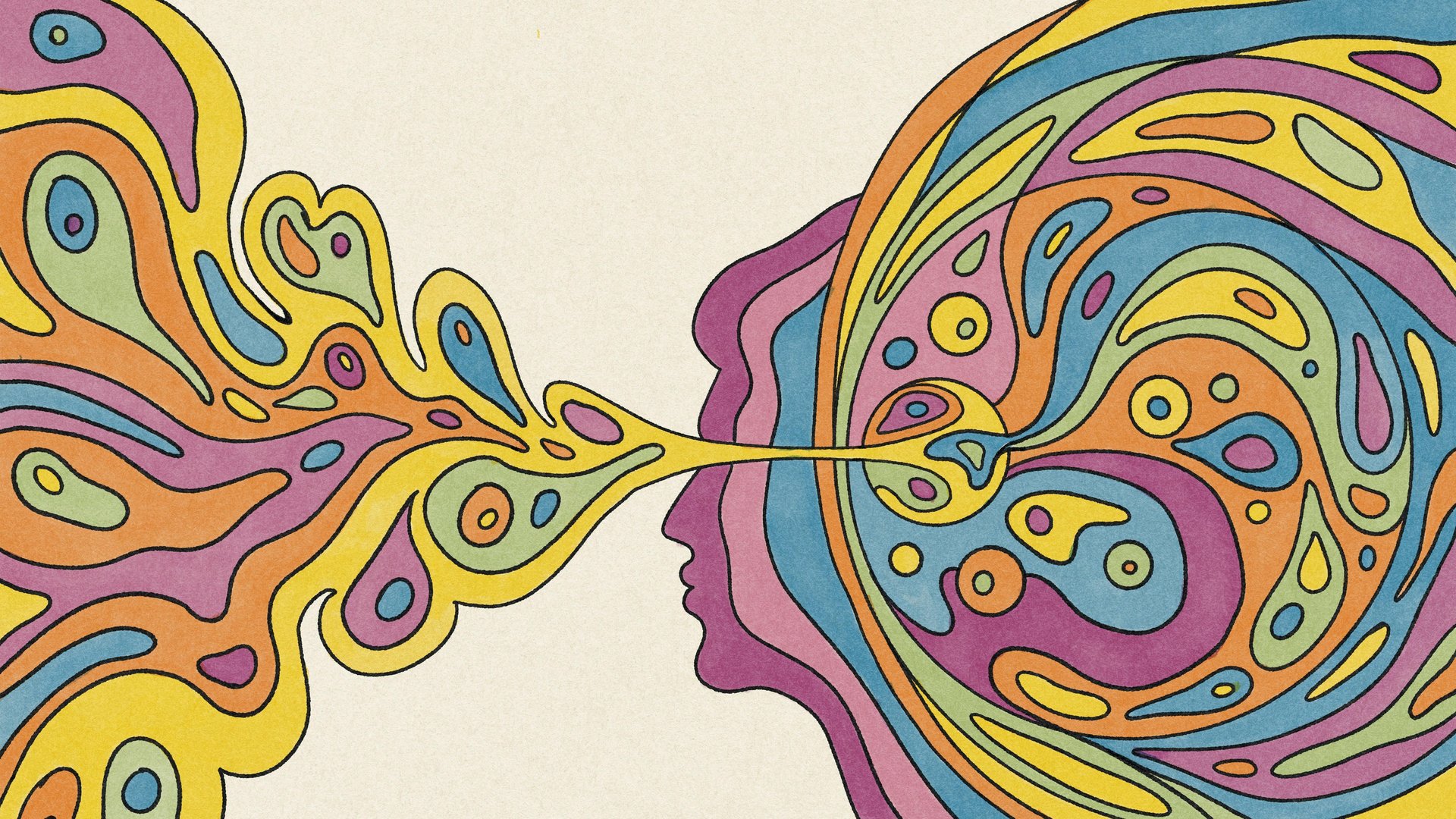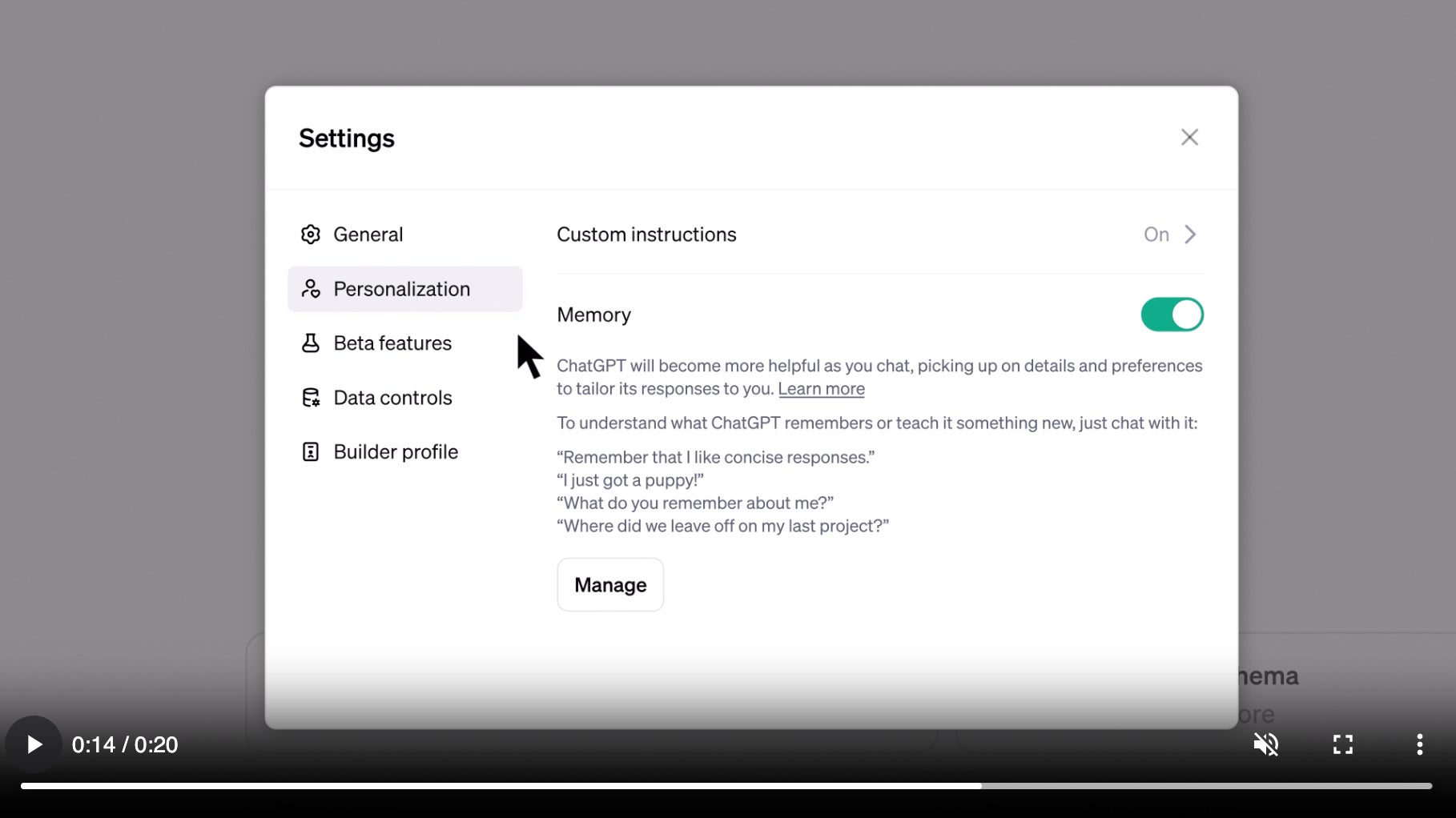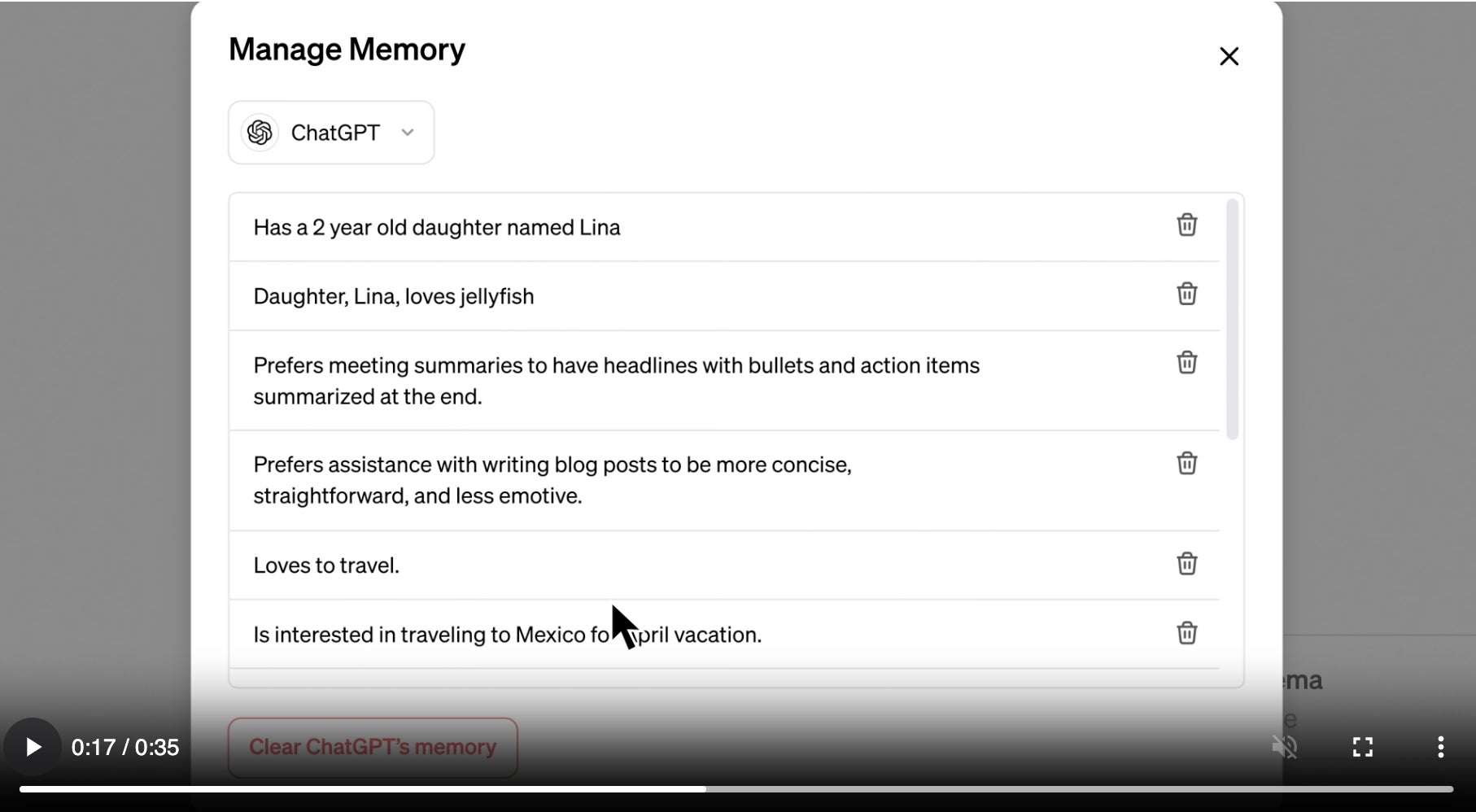What ChatGPT getting a memory means for you
Your next conversation with ChatGPT may feel like you're talking more with a human

Today (Feb. 13) OpenAI announced a new feature where ChatGPT users can now have the AI chatbot remember something specific from chats with it —saving you time from repeating yourself. With a technology sometimes referred to as context retention or persistent context, the feature is called Memory.
Suggested Reading
Here’s how it works: When chatting with the bot, users can ask it to remember specific things or let it pick up details itself. Those details can be used to inform how ChatGPT responds to you, from the ideas and suggestions it generates to the formats it delivers answers in. ChatGPT’s memory will get better over time the more you use it, the company said.
Related Content
With the compelling draw of a chatbot that provides more context to your next conversation, it raises questions about whether this new feature will prompt people to provide more personal or sensitive information — and what OpenAI will be doing with that data.
Here are examples of what you can now ask ChatGPT to remember
- If you tell ChatGPT that you prefer meeting notes with bolded headlines and information in bulleted format, ChatGPT will remember and recap meetings that way. Let the bot know that your child likes sea otters and the color purple, and it may just generate a purple birthday card with a sea otter illustration when you ask it to create a birthday card.
- The new feature is also helpful for businesses. ChatGPT can be used to remember your tone, voice, and format preferences. Memories in the ChatGPT “workspace” are excluded from training AI models, the company says.
- GPTs — or customized chatbots that users can create — will also have a distinct memory. With memory enabled, Book GPT (which recommends your next book) will remember your preferences, like favorite genres, and will tailor recommendations based on that information.
So what does this mean for my data?
OpenAI says that users are in control of ChatGPT’s memory and can choose when the bot remembers things or not. But Memory is on by default.
If you’re not inclined to let ChatGPT recall so much about you, it’s not hard to toggle off. Under Settings, select Personalization, where you can check Memory on or off. The company says that the content you provide could be used to improve its AI models.

You can also manage what memories ChatGPT remembers. Under Memory, click on Manage.

To be sure, Memory brings new concerns about privacy and safety when it comes to how it will remember sensitive or personal information.
The company acknowledges this, saying it’s “taking steps to assess and mitigate biases and steer ChatGPT away from proactively remembering sensitive information, like your health details — unless you explicitly ask it to.”